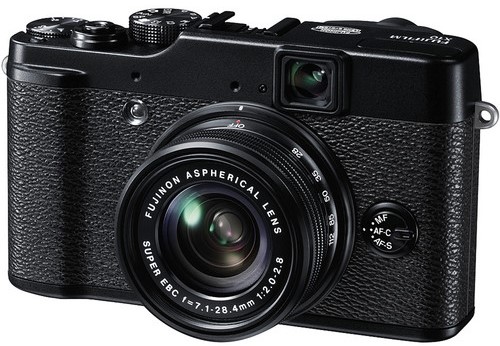If you’ve ever picked up a compact camera that just feels “right” in the hand, you know the spark I’m talking about. The Fuji X-10 delivers that feeling in spades—solid metal, knurled dials, and a confidence-inspiring zoom ring that clicks the camera awake with a twist. It’s a small camera that invites big creativity, whether you’re sneaking in a few frames on a city stroll or traveling light on a weekend escape.
What keeps the Fuji X-10 relevant isn’t nostalgia; it’s capability. A bright, versatile lens. A larger-than-typical compact sensor. An optical viewfinder for sunny days. And controls that let you make deliberate choices at the speed of your intuition. Add Fujifilm’s color science and thoughtfully designed shooting modes, and you’ve got a compact that still punches above its weight.
In this guide, we’ll explore six practical reasons the Fuji X-10 still deserves space in your bag today. I’ll share what matters in real use, why these features hold up, and how to maximize value if you’re shopping used. By the end, you’ll know exactly what this camera can do—and whether it’s the right fit for your style.
Classic Fujifilm Design and Build Quality
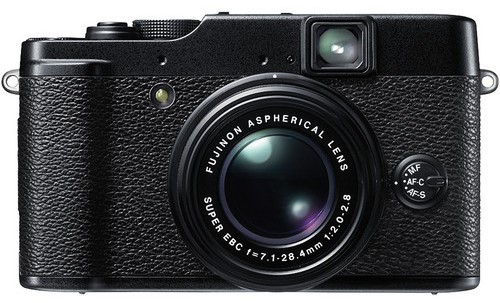
The first impression you get from the Fuji X-10 is that it’s a “real camera,” not a gadget. The magnesium-alloy shell gives it a reassuring density without tipping into brick territory. The leatherette wrap and gently contoured grip make one-handed carrying easy, while the top-plate dials land exactly where your fingers expect them to be. I’ve carried this camera on long days out and never once wished for a wrist strap—though adding one makes it even more nimble.
One of the signature touches is the manual zoom ring around the lens. Twist to 28mm equivalent and the camera powers on; twist through the range to 112mm, and you get precise, mechanical control that electronic rocker switches can’t match. It sounds minor, but that tactile connection speeds up framing and helps you learn focal lengths in a deeper way. On the street, it also means you’re ready to shoot faster than with a menu-driven compact.
Durability matters for a camera you’ll actually take everywhere. Buttons and dials on the Fuji X-10 feel crisp years later, and the hinge and screen remain tight and clear with normal care. This reliability is part of what makes buying one used so appealing: you’re getting a body built to last, not something that ages out after a season.
Finally, the design has a timeless appeal that hasn’t faded. The retro aesthetic isn’t just for looks; it’s a functional layout crafted for photographers who value quick, direct control. If a camera’s feel affects whether you bring it along, the Fuji X-10 stacks the odds in your favor.
Fast, Versatile Lens for Everyday Creativity
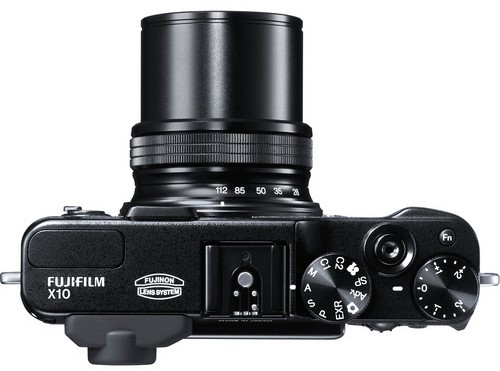
The built-in 28–112mm equivalent lens (f/2–2.8) is the heart of the Fuji X-10. It’s bright enough for evening walks and indoor scenes without immediately reaching for high ISO, and it stays sharp across much of the zoom range. That extra light-gathering at the wide and mid focal lengths lets you keep shutter speeds high to avoid blur while preserving image quality.
In practice, the zoom range is wonderfully practical. At 28mm, you’re set for landscapes, environmental portraits, and architecture. Around 50mm, you get natural perspective and easy subject separation. Push toward 112mm and you’re into flattering portrait territory or detail shots across the street. The mechanical zoom ring makes it easy to land on exactly the framing you want—no hunting, no stuttering.
Close-up shooting is a pleasant surprise. The macro modes allow you to get very near the subject, which makes the Fuji X-10 a fun companion for flowers, textures, or tabletop scenes. With decent light, you can pull out crisp details and pleasing background blur, especially at the wide end where the minimum focus distance is shortest.
Color and contrast from this Fujinon lens pair beautifully with Fujifilm’s processing. If you love a punchy travel look, you’ll enjoy how the lens renders skies and foliage. For portraits, it draws skin tones with a smooth, natural feel. The short version: you don’t have to “work around” this lens—it works with you.
The 2/3-Inch EXR CMOS Sensor Advantage
As Tom Knibbs discusses in the video above, under the hood, the Fuji X-10 uses a 12MP 2/3-inch EXR CMOS sensor that’s larger than typical compact sensors of its era. That size boost brings cleaner files and more forgiving dynamic range, especially when you use the camera’s EXR modes intentionally. It’s not a modern APS-C or full-frame sensor, of course, but for a carry-anywhere compact, it holds its own remarkably well.
EXR modes are the quietly clever part. You can prioritize resolution, dynamic range, or high sensitivity/low noise depending on your scene. Shooting a backlit subject? Bias the camera toward dynamic range to keep highlights from washing out. Working indoors in dim light? Choose the high-sensitivity mode to tame noise and preserve detail. In good light, the resolution-priority mode produces crisp, vivid files that respond nicely to a gentle edit.
Color is where Fujifilm’s heritage shines. The Fuji X-10 delivers the brand’s familiar palette—deep blues, rich greens, and satisfying skin tones that don’t need heavy correction. If you lean into film simulations like Provia or Velvia in-camera, you can dial a look you enjoy without spending forever in post.
The practical outcome is that you can trust the camera in varied conditions. From high-contrast midday scenes to cozy interiors, the sensor and processing give you a flexible base. I’ve always found that good files encourage more shooting, and more shooting leads to better photos. The Fuji X-10 helps create that positive loop.
Optical Viewfinder: A Real-World Asset
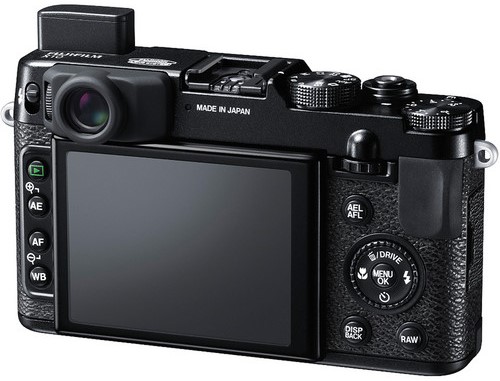
In a world of rear screens and EVFs, having a bright optical viewfinder is a luxury you quickly appreciate. The Fuji X-10 lets you frame through glass instead of a screen, which is fantastic in harsh sun and helps you brace the camera firmly against your face for steadier shots. It’s a simple tool that pays dividends on bright afternoons and quick street moments.
There’s also a mindset benefit. Lifting the camera to the eye trims distractions and narrows your attention to composition and timing. I find my pacing slows in a good way: I notice edges, layers, and gestures. With the Fuji X-10, this optical option complements the rear LCD, giving you two honest ways to shoot based on conditions and preference.
The viewfinder is linked to the zoom, so your framing adjusts as you twist the ring. Coverage isn’t 100%—this is an optical window, not an electronic preview—but you quickly learn how it maps to the final frame. For travel and documentary use, the convenience more than outweighs the small trade-offs.
Battery life gets a bonus, too. Relying less on the LCD stretches your shooting time, which is handy when you’re out all day with a small camera and don’t want to carry spares. Little advantages like this make the Fuji X-10 a very practical everyday companion.
Keep Reading: What is the Best Affordable Compact Camera?
Manual Controls and Thoughtful Shooting Modes
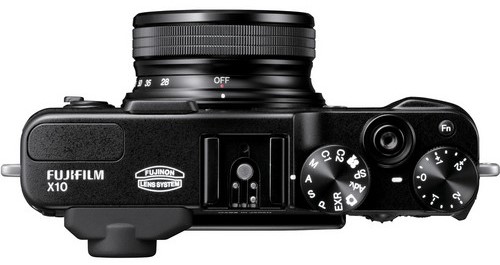
One reason photographers stick with the Fuji X-10 is how it invites deliberate control without slowing you down. Dedicated exposure modes, a responsive exposure compensation dial, and the manual zoom ring combine to make the camera feel like an extension of your eye. If you’re teaching yourself exposure, this is a friendly way to learn; if you’re experienced, it’s simply efficient.
Film simulations are the creative spice. Provia gives a clean, general-purpose look; Velvia adds punch for landscapes and travel; Astia softens contrast for portraits. Pair these with the EXR settings and you can nudge your files toward your preferred aesthetic in-camera. It’s liberating to know that your JPEGs can look great with minimal fuss, especially when you want to share quickly.
The autofocus system is spry for everyday scenes, and the shutter is quiet enough for candid work. I’ve used the Fuji X-10 in cafés and galleries without drawing attention—useful when you’re trying to capture genuine moments. The camera also offers handy bracketing and drive options if you’re working a tricky lighting situation or want to catch a fleeting expression.
Most importantly, nothing gets in your way. Menus are sensible, the grip is secure, and the buttons are logically placed. It’s the kind of design where you stop thinking about the camera and just make images, which is the whole point.
Value: Why the Fuji X-10 is a Smart Buy (and Where to Get One)
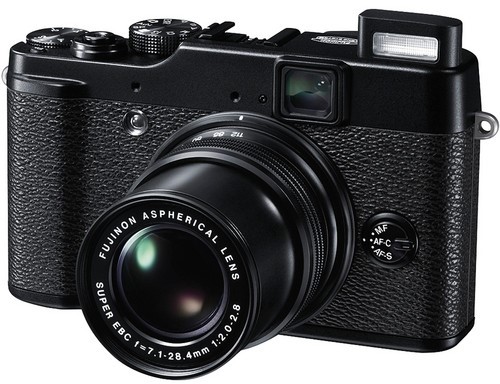
Here’s the pragmatic case: the Fuji X-10 gives you a bright lens, a larger compact sensor, an optical viewfinder, and photographer-friendly controls in a durable body—usually for far less than the price of a new premium compact. That combination is rare at this price point. If you want a capable everyday camera without committing to an interchangeable-lens system, this is a savvy choice.
Depreciation works in your favor. Because the camera launched years ago, you’re paying for performance, not novelty. The features that matter for real-world shooting—lens speed, sensor size, ergonomics—haven’t gone out of style. I’ve often recommended the Fuji X-10 to friends who want better results than a phone but don’t want to juggle lenses.

When buying used, condition and seller reputation are everything. That’s why I like pointing my readers to MPB for the Fuji X-10. MPB specializes in used photo and video gear, grades every item with clear condition notes, and backs purchases with a six-month warranty. You can also trade in your current kit to offset the cost. It’s a straightforward, low-drama way to get a good copy without rolling the dice on an unverified listing.
Practical tip: look for clean glass, a firm zoom action, responsive buttons, and a tidy rear screen. If you can, grab an extra battery and a small wrist strap. With a good sample from MPB and a little care, the Fuji X-10 will keep delivering for years.
Why the Fuji X-10 Succeeds
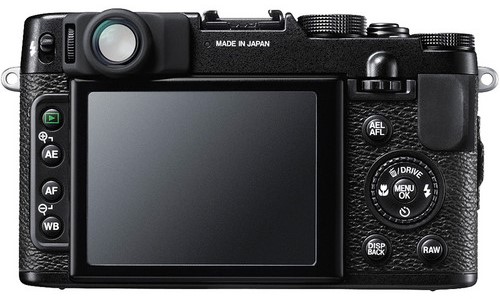
The Fuji X-10 succeeds because it blends the right ingredients: classic build, a bright and useful zoom, a capable 2/3-inch sensor with smart EXR modes, an optical viewfinder that’s genuinely helpful, and controls that encourage intentional photography. Wrap that in real-world value—especially when buying used from a trusted source—and you have a compact that still makes a lot of sense.
If you’re craving a camera that feels great to use, travels light, and delivers reliable image quality across many situations, the Fuji X-10 earns a serious look. It’s small enough to carry daily and capable enough to reward careful seeing—exactly the mix that helps you make more photographs you’re proud of.
FAQs
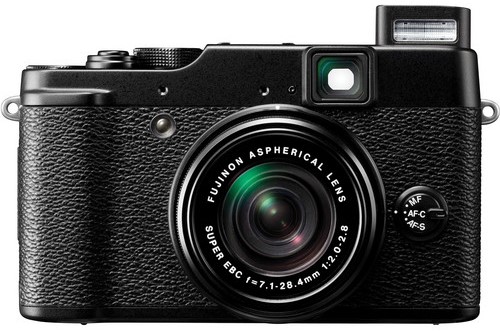
Is the Fuji X-10 still worth it for everyday photography?
Yes. The Fuji X-10 offers a bright 28–112mm equivalent lens, a larger compact sensor, and responsive controls that make it great for travel, family, and street shooting.
How does the Fuji X-10 compare to a modern smartphone?
Phones are convenient, but the Fuji X-10 gives you optical zoom, better control over exposure, and an optical viewfinder for sunny conditions—advantages that help in tricky light and deliberate shooting.
Can I get shallow depth of field with the Fuji X-10?
Within reason. At wider focal lengths and close distances, the fast f/2–2.8 aperture on the Fuji X-10 can create pleasing background blur, especially in close-ups and portraits near the tele end.
What should I check when buying a used Fuji X-10?
Inspect the lens for scratches or haze, test the zoom ring for smooth action, check buttons and dials, and review sample images for focus and sensor cleanliness. Buying from MPB helps ensure accurate condition grading and warranty support.
Does the Fuji X-10 shoot good JPEGs, or should I use RAW?
Both work well. The Fuji X-10 produces pleasing JPEGs—especially using film simulations—while RAW gives you more latitude for editing if you need it.
Is the Fuji X-10 a good travel camera?
Absolutely. It’s compact, durable, and versatile, with a zoom range suited to most travel situations. The optical viewfinder and strong color rendering make it a reliable companion.
Friendly disclaimer: Our articles may contain affiliate links that support us without costing you more, and sometimes we spice things up with sponsored content—but only for products we truly stand behind!

